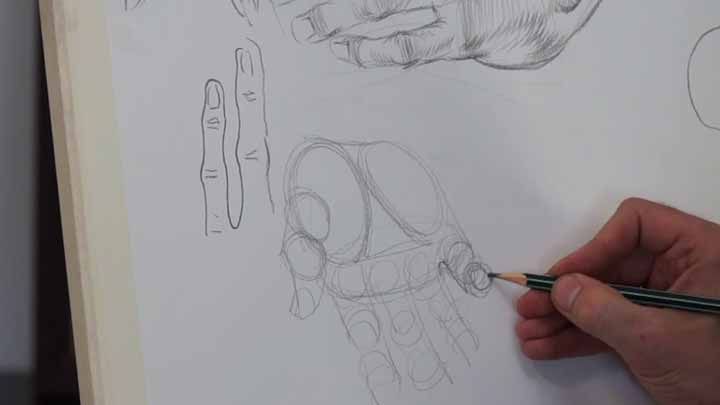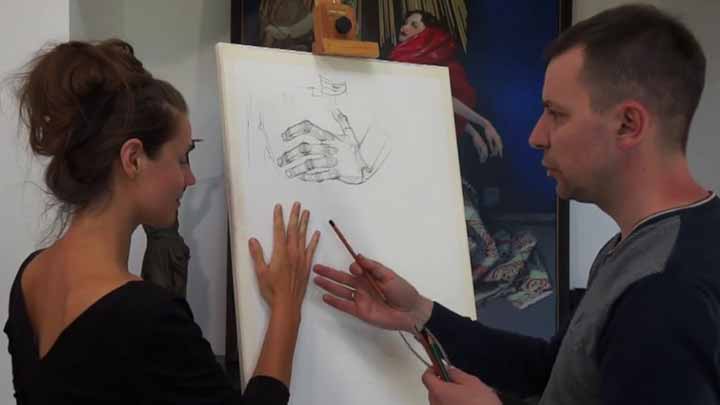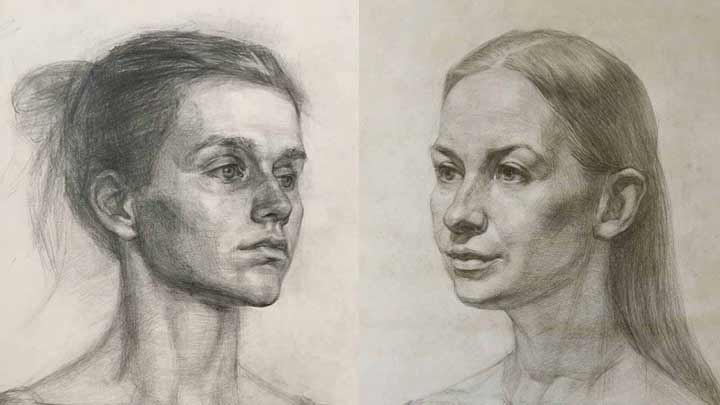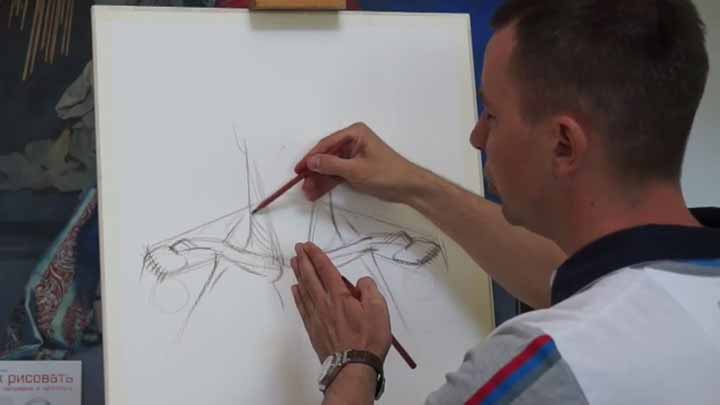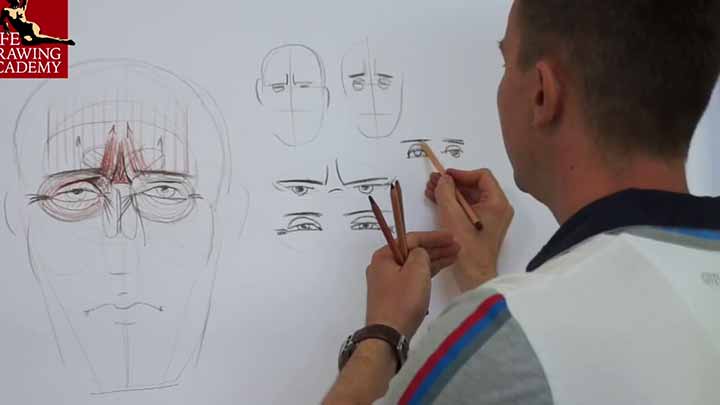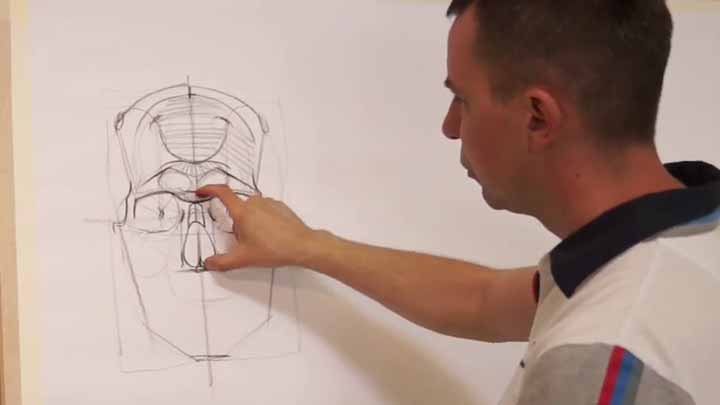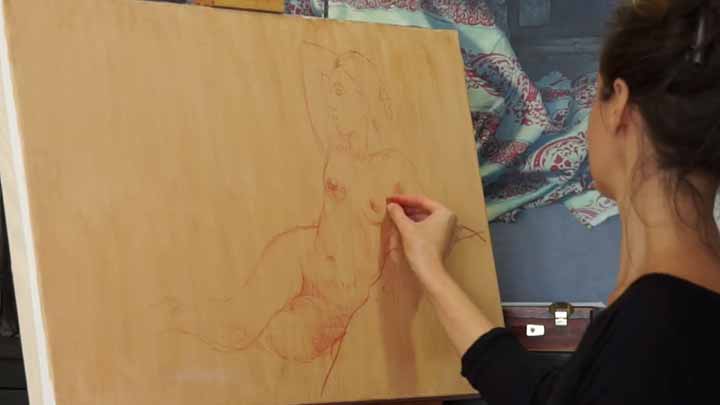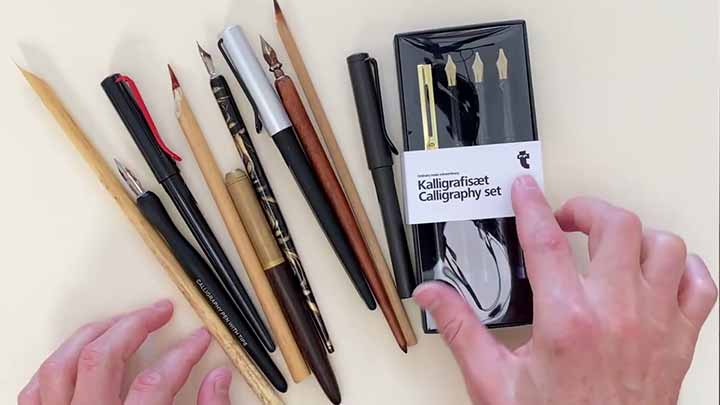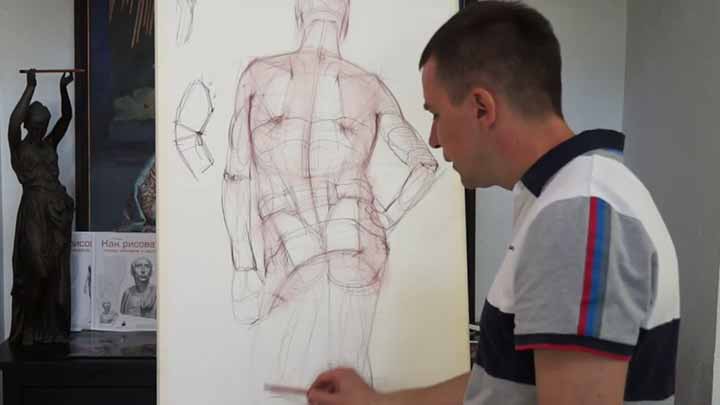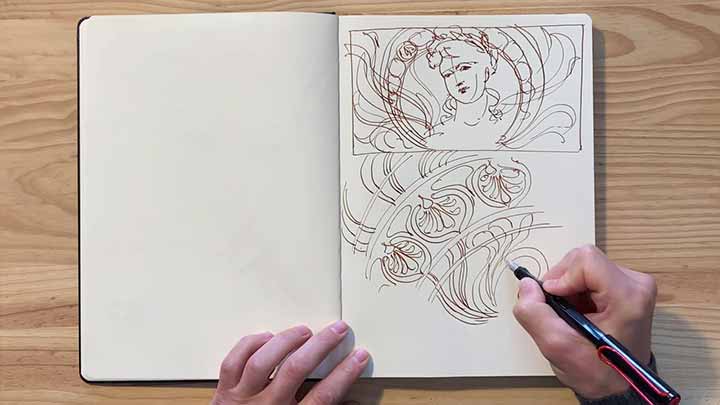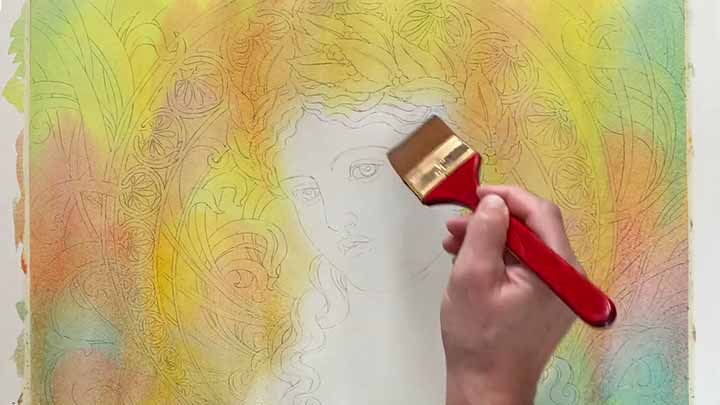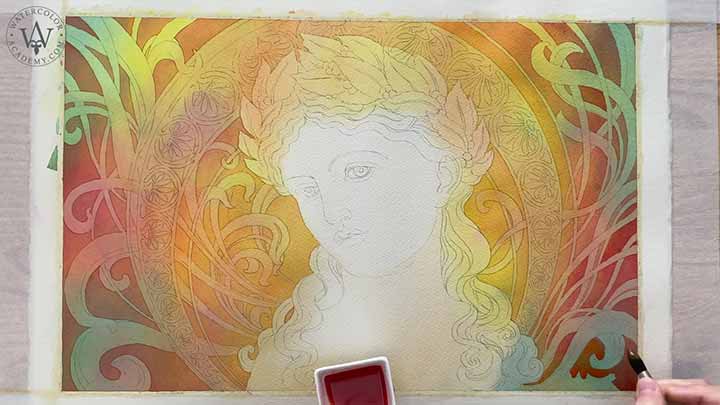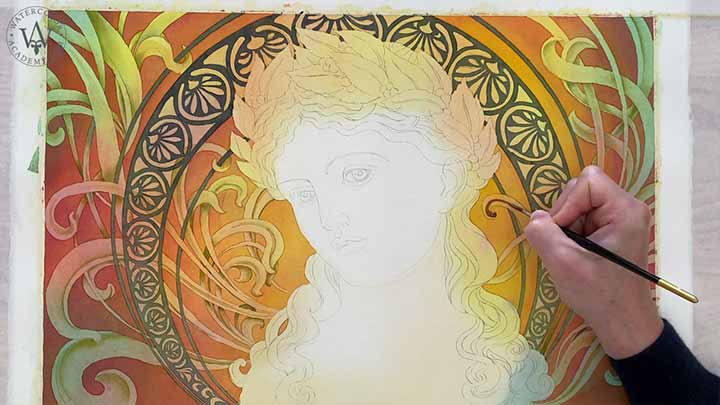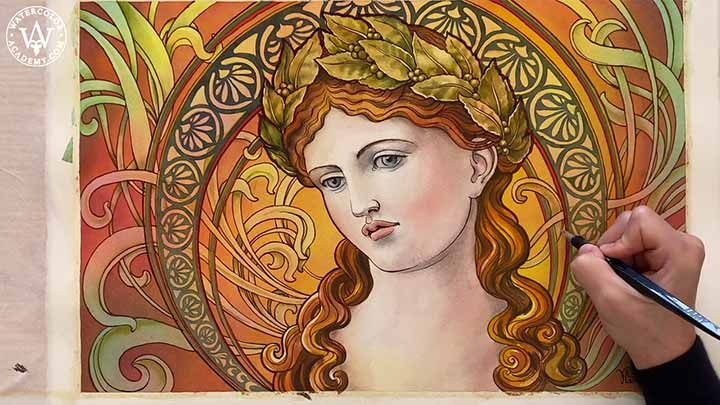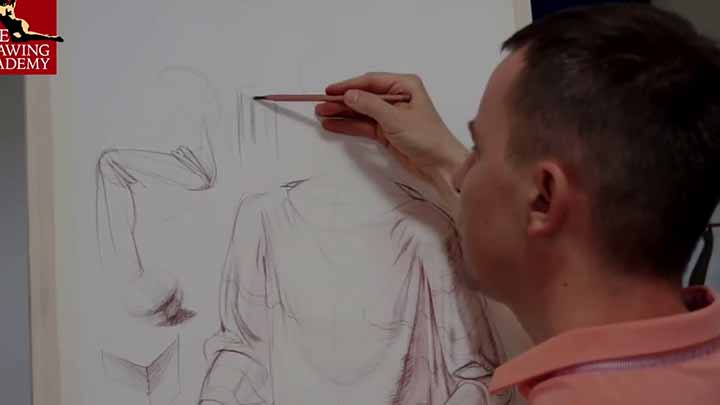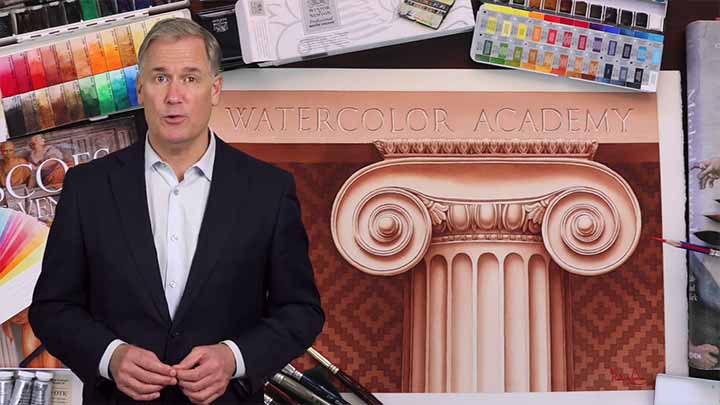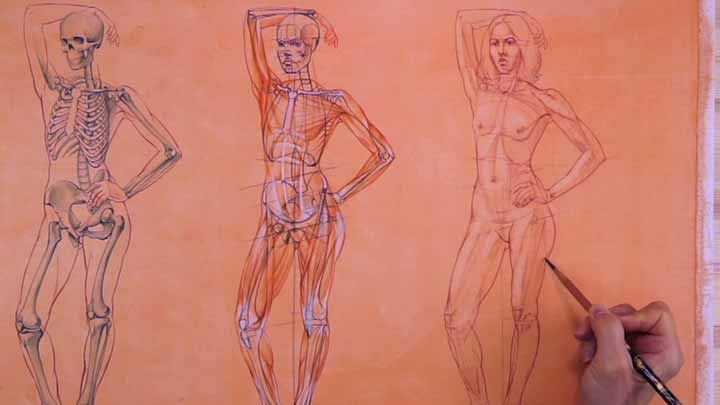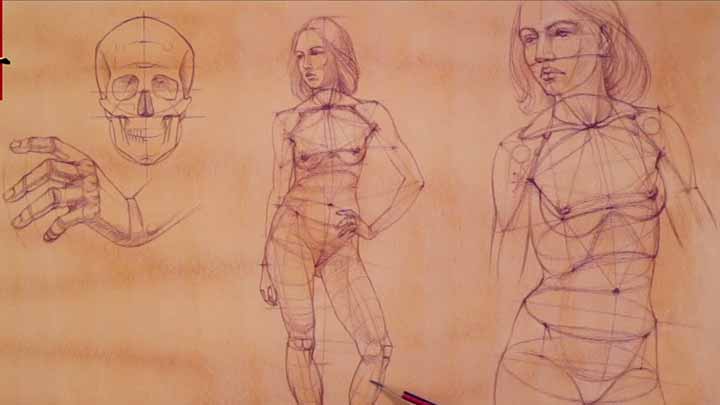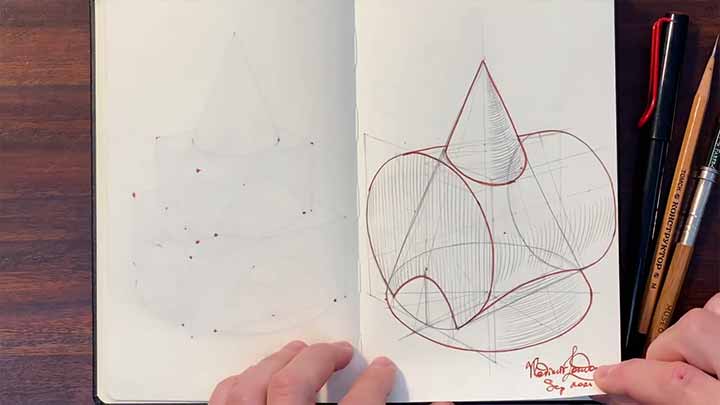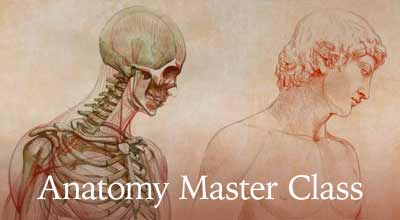How to Draw Videos
How to Draw Proportionate Hands
Not every artist is able to make such a drawing convincingly. We can learn from the great masters. For example, in the masterpiece by Leonardo, we can see how the artist skilfully portrayed a foreshortened hand that is pointing to a viewer. Every finger joint in this masterpiece is depicted with great attention.
Watch Video »How to Draw Hands
Drawing hands is one of the most difficult topics of life drawing. Every figurative artist comes up with a question about how to draw hands. Hands are often present in portraits, and knowing how to draw them realistically is very important for an artist. There is only one way to achieve good results in drawing hands—by knowing the hand's construction.
Watch Video »How to Draw a Female Portrait in Graphite
The purpose of this lesson is to learn the proportions of the human head and the main principles of working with light and shadow, as well as linear constructive drawing. When it comes to paired objects like eyes, you need to draw them simultaneously, the left and right one at the same time. This helps to maintain symmetry and similarity in sizes.
Watch Video »How to Draw Neck and Shoulders
Very often art students have challenges with drawing the shoulder girdle. In this video lesson, you will learn how to correctly connect a head with the neck and neck with shoulders in portrait drawing. This can be done using constructive drawing principles.
Watch Video »How to Draw Emotions in Portrait
In this video, you will discover how facial muscles influence the appearance of a face and emotions on it. To begin with, we will roughly mark the outlines of a skull. This is a very stylized sketch with exaggerated facial mass. Here, we have three-thirds of the face, a chin and mass of a forehead.
Watch Video »How to Draw a Skull Anatomy and Proportions
When drawing portraits, many art students face challenges because they lack knowledge of the head's internal structure. The human head and face are mostly shaped not by muscles, but by the bones of the skull. These bones are fixed and stable; muscles do not influence their shapes.
Watch Video »How to Sketch a Female Figure from Life
When you get to the level of skills when a human body's proportions and anatomy are no longer a challenge for you, and you can draw figures from life using such knowledge on autopilot, then to go to the next step—it is good to use a more "artistic" medium like red chalks.
Watch Video »Help! I Can't Draw in Pen and Ink
In this video, you will discover: which pen and ink drawing materials you need; which is better - cheap or expensive calligraphy pens; what kind of inks to use; how to sketch portraits in pen and ink; how to make the DIY tools for ink drawing; and where and how you can learn great drawing skills.
Watch Video »How to Sketch a Standing Man
From constructive drawing, we progress to outlines and tones. The edge of the triceps borders the edge of the widest muscle of the back, just below the armpit. Along the edge of the big round muscle of the shoulder blade, there is a border between light and shadow. The area below the shoulder blade has deeper tonal values.
Watch Video »How to Draw a Portrait for Watercolor
In this video I will talk about drawing. Here is one of my sketchbooks. In this book you can see a few sketches. These are preliminary drawings for a watercolor composition I have in mind. I will make another sketch in pen and ink using a fountain pen and brown ink. I'm drawing this portrait from imagination.
Watch Video »How to Preserve White Paper When Painintg Wet into wet
To wet the paper surface, I will use a flat wide synthetic brush and clean water. This is high-quality, Saunders-Waterford watercolor paper, which has 300 gsm weight and is made of 100% cotton. It has a cold-pressed, which is also called 'Not', surface. First, I will moisten the entire paper sheet.
Watch Video »How to Preserve White Paper When Painintg Wet on dry
I will use the same six premixed colors to make another wash on top of the under layer. However, this time I will apply it not wet-into-wet but wet-on-dry. The painting technique is called the saw-wash. I apply short, diagonal brushstrokes, overlapping every stroke with the previous one.
Watch Video »How to Paint Decorative Design in Watercolor
For the round shape around the girl's head, I premix three colors: two very dark chromatic greys, one of which is a bit bluish while the other has a green undertone; and the third color is dark green. These three colors will be used for the round shape.
Watch Video »How to Paint a Portrait in Watercolor
It's time to paint the portrait. I premixed three colors on the palette. These colors will be used for the hairstyle. I will paint the hairs with a natural sable brush from Escoda. It is a perfect tool for making precise brushstrokes. It takes less paint than the mop brush, but it holds its shape perfectly.
Watch Video »How to Outline Watercolor Portrait in Ink
It's time to paint the portrait. I premixed three colors on the palette. These colors will be used for the hairstyle. I will paint the hairs with a natural sable brush from Escoda. It is a perfect tool for making precise brushstrokes. It takes less paint than the mop brush, but it holds its shape perfectly.
Watch Video »How to Draw Clothes
In this video lesson, you will discover How to Draw Clothes from life with the full understanding of wrinkles and folds.
Watch Video »Watercolor Academy
In the Watercolor Academy courses, you will learn advanced techniques for using watercolors, as well as trade secrets that are not taught anywhere else. Unlike in contemporary art colleges, Watercolor Academy teachers will create paintings in front of your eyes while explaining everything in detail – from mixing colors to applying them the right way.
Watch Video »How to Draw a Female in Contrapposto
As you see in this lesson, the knowledge of proportions and anatomy helps to build a figure step by step. Even though I draw this figure from life, a model is actually secondary to the knowledge I am using in drawing. I can do contrapposto pose from memory or imagination, as I have done it hundreds of times in short sketches and long studies from life.
Watch Video »How to Draw a Figure with Correct Proportions
As you see in this lesson, the knowledge of proportions and anatomy helps to build a figure step by step. Even though I draw this figure from life, a model is actually secondary to the knowledge I am using in drawing. I can do contrapposto pose from memory or imagination, as I have done it hundreds of times in short sketches and long studies from life.
Watch Video »Constructive Drawing - How to Draw Intersecting Objects
In this video, I will show you how to draw intersecting objects using constructive drawing principles. Such principles greatly help to make realistic artworks especially when drawing from imagination. Here are some of my sketches. I do them to keep my drawing skills sharp and to teach my art students constructive drawing.
Watch Video »